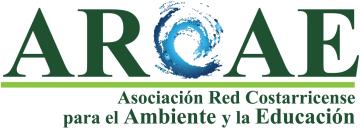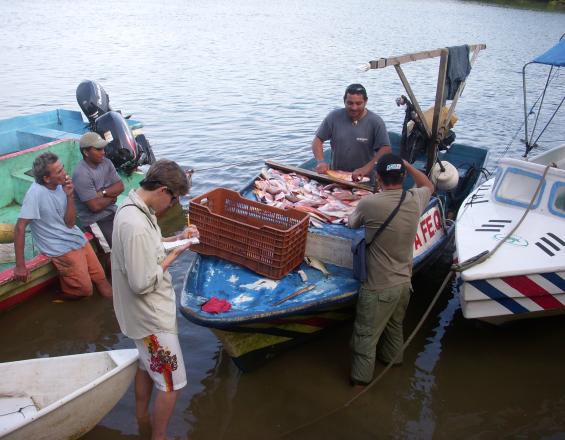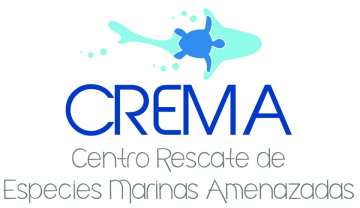
AMP y pesca artesanal sostenible certificada

La solución es añadir valor a la captura artesanal de palangre de fondo en Costa Rica. Una evaluación de las poblaciones basada en 10 años de datos de desembarques (tallas de pargo) mostró que la pesquería está plenamente explotada hasta una ligera sobrepesca. Por ello, se puso en marcha un plan de gestión local que limita el esfuerzo a niveles sostenibles. Al mismo tiempo, se ha aumentado el tamaño de las AMP multiuso de la zona para atenuar mejor los impactos de la pesca destructiva. Se están introduciendo mejoras en la cadena de valor, incluida una estrategia de certificación de productos, para aumentar y estabilizar los ingresos de los pescadores.
Contexto
Défis à relever
El cambio climático supone la mayor amenaza para el desarrollo sostenible de la pesca artesanal de Costa Rica. El aumento de la temperatura de las aguas costeras y los efectos resultantes pueden afectar gravemente a las poblaciones de peces y los ecosistemas costeros, y degradar los medios de subsistencia de los pescadores.
Esto se ve agravado por los fallos de gestión en países en vías de desarrollo como Costa Rica, donde la gobernanza de la pesca está repartida entre el Instituto Nacional de Pesca y el Ministerio de Medio Ambiente, que luchan por comunicarse eficazmente entre sí y con los pescadores.
Las pesquerías no selectivas, destructivas e ilegales que operan en el caladero de Bejuco están afectando aún más a la población de pargo y a su resistencia a los cambios de los factores ambientales. De ellas, la pesca de arrastre del camarón supone la mayor amenaza para las comunidades artesanales locales, ya que los arrastreros pescan activamente pargos porque el camarón ya está sobreexplotado.
Ubicación
Procesar
Resumen del proceso
El proyecto tiene una base científica. Se han recogido y analizado metódicamente datos sobre la composición de las capturas y los conocimientos ecológicos de los pescadores para determinar los impactos ambientales del uso del palangre de fondo, así como las condiciones socioeconómicas de esta pesquería artesanal de pargo. A partir de estos resultados, se elaboró un plan de gestión que se utilizó para justificar científicamente el desarrollo de AMP de usos múltiples en el caladero de Bejuco, con el fin de promover la extracción sostenible del recurso pargo local. Para promover el desarrollo de la pesquería y las estrategias de gobernanza local, las partes interesadas del proyecto están solicitando una certificación internacional de sostenibilidad, basada en el análisis previo del impacto y la gestión del palangre de fondo. El proyecto pretende utilizar una certificación para crear mercados innovadores que promuevan pautas de consumo responsables y, en última instancia, el progreso económico de la pesquería. La certificación del pargo, junto con los demás componentes del proyecto, se utilizará para promover la capacidad de la pesquería de cogestionar estos recursos costeros.
Bloques de construcción
Recogida y análisis de datos sobre la composición de las capturas
Para desarrollar y gestionar una pesquería sostenible desde el punto de vista medioambiental, es necesario establecer una serie de indicadores de rendimiento para sus especies objetivo, las especies de captura accidental comunes, los factores medioambientales y los regímenes de gestión. Algunos ejemplos de estos indicadores para la pesquería artesanal de pargo con palangre de fondo del Bejuco incluyen el estado de la población, las tasas de capturas accesorias y descartes, las tasas de captura de especies en peligro y/o protegidas, los impactos de las artes de pesca en el fondo marino y los organismos bentónicos asociados, el plan de gestión local y la capacidad nacional de gestión pesquera. Desde 2007, la composición de las capturas de la pesquería de palangre de fondo de Bejuco ha sido objeto de un seguimiento continuo por parte de observadores e investigadores a pie de muelle que acompañan a los pescadores en sus salidas nocturnas. Esta información, junto con la recopilación de conocimientos ecológicos de los pescadores, ha permitido a los investigadores identificar muchos de estos indicadores. En estrecha colaboración con el gobierno nacional, también están tomando forma iniciativas de desarrollo de áreas protegidas y planes de gestión.
Factores facilitadores
Es necesario que exista colaboración entre los investigadores (colaboradores de ONG y estudiantes universitarios) y los pescadores locales. Para crear este tipo de ambiente debe establecerse un cierto nivel de confianza entre ambas partes. Los investigadores del proyecto y otros miembros de ONG asociadas fueron invitados a las comunidades pesqueras por los propios pescadores, lo que facilitó este proceso.
Los gastos de recogida de datos han corrido a cargo principalmente de ONG internacionales (subvenciones) y estudiantes de investigación (instituciones).
Lección aprendida
Para que los esfuerzos de recopilación de datos a largo plazo tengan éxito, debe establecerse una relación basada en la confianza mutua. Los pescadores deben saber que los investigadores no utilizarán la información sobre capturas en su contra para comprometer aún más su industria, y los investigadores deben tener la seguridad de que cuentan con el pleno apoyo de los pescadores y con un acceso abierto a sus operaciones. Los datos también deben registrarse a lo largo de todo el año (o temporada de pesca) y no sólo "cuando la pesca es buena". Hay meses en los que esta pesquería casi no produce pargos. Estos datos son valiosos. Los investigadores se toparon con un problema de análisis estadístico porque dejaron de tomar datos cuando bajaron las capturas por unidad de esfuerzo. Esto creó un sesgo en sus análisis.
Para facilitar la recopilación de datos a largo plazo, los investigadores están trabajando con el gobierno para formar a los pescadores en el registro de sus propias capturas y determinar los estados reproductivos de determinadas especies. También se está desarrollando una aplicación para teléfonos inteligentes con el fin de facilitar el proceso de recogida de datos por parte de los pescadores.
Plan de gestión de la pesca artesanal del pargo
Los datos sobre la composición de las capturas, un análisis de las poblaciones de pargo y los conocimientos ecológicos de los pescadores, recopilados a través de grupos de discusión dirigidos por pescadores, talleres y otros actos participativos, se compilaron en un plan de gestión que fue evaluado y finalmente aprobado por las dos asociaciones de pescadores. El plan es una herramienta de gobernanza local que detalla los métodos de pesca y las medidas adoptadas para mantener una pesquería sostenible de pargo. Este plan se presentará a otras pesquerías de pargo de la Península que deseen desarrollar estrategias y herramientas de gestión. Las estrategias de cogestión no están reconocidas en Costa Rica, pero la aprobación de planes de gestión locales es una forma de promover su desarrollo.
Factores facilitadores
Los pescadores deben estar dispuestos a colaborar con los investigadores para recopilar la información necesaria para la elaboración de un plan de gestión. Además, los pescadores deben saber qué es una pesquería sostenible y cómo se gobierna. Esto significa que tendrán que desarrollar nuevos métodos de pesca que mantengan la pesquería dentro de unos límites de producción sostenibles, así como crear sistemas de autogobierno que regulen sus actividades.
Lección aprendida
El término "plan de gestión" tiene una connotación negativa entre los pescadores de pargo. Esto se debe al anticuado sistema descendente de gobernanza de los recursos costeros de Costa Rica. Durante años se ha dicho a los pescadores artesanales qué, dónde y cuándo pescar a través de una serie de planes nacionales de gestión que han descuidado el proceso de consulta local; por ello, los investigadores han tenido que utilizar el término "estrategia de pesca sostenible" en lugar de "plan de gestión". El proceso de aprobación ha llevado mucho tiempo y, en general, los pescadores desconfían de otro conjunto de normas y reglamentos a los que atenerse. Los investigadores del proyecto tuvieron que identificar a miembros clave de la asociación que estuvieran dispuestos a dedicar tiempo a aprender y comprender las ventajas de desarrollar una pesca sostenible. A continuación, estas personas empezaron a convencer a sus colegas pescadores del valor a largo plazo de la estrategia.
Aunque los pescadores locales de pargo observan la estrategia de su pesquería, el gobierno costarricense aún no ha reconocido ninguna iniciativa de desarrollo de la cogestión.
Desarrollo de AMP multiuso
En el distrito de Bejuco se han creado dos AMP de usos múltiples entre investigadores, pescadores y el Ministerio de Medio Ambiente para gestionar mejor la población local de pargos. Estas zonas permiten el uso de palangres de fondo artesanales (el arte de pesca preferido de los pargos de la zona) y líneas de mano, pero no permiten el uso de métodos menos selectivos, como las redes de arrastre para camarones. Las AMP costeras de Costa Rica empezaron como extensiones marinas de zonas terrestres protegidas previamente establecidas, y las AMP de Bejuco no son diferentes. Su objetivo original era proteger a las tortugas marinas de los arrastreros camaroneros, pero han evolucionado hasta convertirse en herramientas de gestión de recursos costeros espaciotemporales más complejas.
Las AMP de la zona proporcionan un marco jurídico que protege los intereses de los pescadores locales frente a la flota camaronera industrializada (los camaroneros pescan pargos en la zona porque no es económicamente viable pescar camarones en Costa Rica). Costa Rica está desarrollando estrategias de adaptación al cambio climático financiadas por el Fondo de Adaptación. Inherente a éstas es el desarrollo continuo de áreas marinas protegidas y se está discutiendo la viabilidad de ampliar las dos áreas existentes.
Factores facilitadores
Las AMP de Bejuco se establecieron hace 10-15 años. Su enfoque original se centraba en la conservación de las tortugas marinas y no contemplaba estrategias de gestión de ecosistemas. A medida que se comprende y aprecia la importancia de la pesca artesanal del país, su sistema de AMP se ha visto obligado a evolucionar, dejando amplias oportunidades para su mejora y ampliación. Por este motivo, se están combinando datos sobre tortugas marinas, pesquerías y planes de gestión local para justificar su ampliación en Bejuco.
Lección aprendida
Un plan de gestión de AMP de usos múltiples que sea aplicable y represente adecuadamente los intereses de la comunidad es tan importante como la creación de la propia AMP. Por desgracia, el sistema costarricense de gobernanza costera/marina está fragmentado entre dos entidades distintas, el Ministerio de Medio Ambiente y el Instituto Nacional de Pesca. Estos dos organismos no se comunican entre sí de forma eficaz. Además, las AMP de Bejuco no tienen sus propios planes de gestión, sino unos párrafos añadidos a los planes de los refugios de vida silvestre. Esto ha provocado lagunas en la gobernanza y la aplicación de la ley que han sido aprovechadas por la pesca ilegal (redes de enmalle y arrastre de camarones).
Certificación internacional de sostenibilidad
En 2015, la pesquería de pargo de Bejuco se sometió a una evaluación completa por parte del Marine Stewardship Council (MSC). Sin embargo, el proceso de certificación se interrumpió en 2016 debido a graves deficiencias en la gobernanza nacional. Debido a la dificultad de muchas pesquerías de pequeña escala para satisfacer los rigurosos requisitos del MSC, Fair Trade USA ha desarrollado un Programa de Pesquerías de Captura que combina los estándares medioambientales del MSC con sólidos requisitos sociales. El proceso de certificación es gradual y permite a las pesquerías desarrollar las herramientas necesarias para cumplir los requisitos del estándar a lo largo de un periodo de 6 años, en lugar de hacerlo todo de golpe en el momento de la evaluación, como exige el MSC. El proceso de Comercio Justo aborda mejor las realidades sociales y de gestión en las que operan la mayoría de las pesquerías artesanales. Por ello, los pescadores y las partes interesadas de la cadena de valor han iniciado una preevaluación inicial de Comercio Justo de la pesquería. El componente básico de la certificación de esta solución ha sufrido muchos cambios a lo largo de los años, pero los miembros del proyecto sienten que están avanzando hacia mejoras socioeconómicas viables y a largo plazo que, desde el principio del proceso del MSC, han sido la fuerza motriz de la iniciativa de certificación.
Factores facilitadores
Todas las partes interesadas en el proyecto deben comprender el proceso de Comercio Justo, incluidas las responsabilidades relativas a su prima de precio. Los pescadores deben verlo como una herramienta única y útil para desarrollar mejor la pesquería ante un futuro incierto. Las partes interesadas en el proyecto también deben ser capaces de recaudar una cantidad considerable de dinero para financiar el proceso de evaluación.
Lección aprendida
No todas las partes interesadas en el proyecto verán inmediatamente los beneficios de una certificación. La comunicación constante con los miembros clave de la pesquería es esencial para que el proceso siga avanzando. Han pasado años desde que la pesquería de palangre de fondo de Bejuco pasó por el fallido proceso del MSC y se ha tenido que recaudar mucho dinero para continuar en el camino hacia una posible certificación futura. Una sólida administración del proyecto es esencial para mantener estos esfuerzos.
Las certificaciones mundiales de pesquerías son una entidad en evolución. Dadas las complejidades sociales y medioambientales de las pesquerías mundiales, no puede haber una única certificación milagrosa. Poco a poco, los sistemas de certificación se han dado cuenta de ello y han empezado a adaptarse a las necesidades específicas de la pesca artesanal. La pesquería de pargo de Bejuco ha vivido este proceso desde 2011 y ha acumulado una larga lista de lecciones aprendidas, ¡demasiado larga para detallarlas en esta página web!
Mercados alternativos para el pescado de calidad
El objetivo de este bloque es promover el desarrollo socioeconómico de esta pesquería mediante el aumento de los ingresos de los pescadores. Los complejos turísticos y restaurantes de la zona están interesados en suministrar a sus clientes pargo sostenible de origen local, ya que muchos turistas que visitan Costa Rica son conscientes del medio ambiente y quieren frecuentar negocios que ofrezcan opciones gastronómicas sostenibles, y están dispuestos a pagar un precio superior por estos servicios. Las lonjas y restaurantes de lujo de San José también están interesados en suministrar marisco de alta calidad a sus clientes.
Dado que la demanda de pescado sostenible en Costa Rica está creciendo, los miembros del proyecto están trabajando con las dos asociaciones de pescadores de Bejuco para desarrollar su capacidad de gestión de la cadena de valor. Las asociaciones son ahora entidades jurídicas con juntas directivas que participan activamente en el proceso de toma de decisiones. Se han introducido mejoras en las infraestructuras y la cadena de frío para aumentar la calidad de las capturas artesanales de pargo. La planta local de procesamiento de pescado se está adecuando para cumplir los requisitos del Ministerio de Sanidad. También se están resolviendo los problemas de tesorería y otros problemas administrativos para facilitar la venta de pescado.
Factores facilitadores
Conseguir que el comprador local de pescado de Bejuco, que es parte integrante de la cadena de valor, vea el desarrollo de puntos de venta alternativos como una empresa económica viable determinará si los pescadores aumentan o no el valor de sus capturas y si esta estrategia de desarrollo socioeconómico seguirá adelante. En este momento, el comprador local sigue vendiendo la mayor parte de las capturas a otro distribuidor, pero los pescadores confían en que las mejoras de la pesquería empiecen a cambiar esta situación.
Lección aprendida
El desarrollo socioeconómico de la pesquería de palangre de fondo de Bejuco ha sido el aspecto más difícil de aplicar de esta solución. Los miembros del proyecto han tenido dificultades para encontrar personas capaces de liderar este proceso. A pesar de ello, existe un creciente interés de los consumidores por el marisco capturado por los pescadores artesanales locales. Los intermediarios locales existentes, con poco interés previo en el proyecto, están empezando a comprender el potencial económico de esta estrategia, pero al mismo tiempo, el desarrollo de nuevos mercados también ha planteado problemas de liquidez. Aunque estas cuestiones se están abordando, han ralentizado considerablemente el proceso y demuestran la dificultad inherente a esta estrategia. Lo que no debe pasarse por alto, sin embargo, es el progreso que han realizado los pescadores y el comprador local, así como la necesidad de abordar estas cuestiones antes de poder aplicar una nueva estrategia de mercado.
Impactos
Los investigadores pesqueros empezaron a registrar los datos de capturas (desembarques) de la pesquería artesanal de pargo de la península de Nicoya en 2007. Ahora, 10 años después, la especie objetivo de la pesquería, el pargo rosado(Lutjanus guttatus), ha sido objeto de una evaluación de la población basada en la talla. Se ha puesto en marcha un plan de gestión (lo que los pescadores locales denominan su estrategia local de sostenibilidad), diseñado para abordar los problemas planteados por la evaluación de la población. Como en la última década la población fluctuó entre el umbral de sobrepesca y el umbral objetivo (con algunos casos de infrapesca), el plan de gestión ha tenido esto en cuenta y se ha aconsejado a los pescadores que no aumenten el esfuerzo y sigan colaborando con los investigadores para determinar mejor la situación de la población.
35.000 hectáreas de zonas marinas protegidas de usos múltiples están actualmente protegidas de la pesca destructiva, pero abiertas a artes de pesca de bajo impacto. Además, se están manteniendo conversaciones entre los pescadores y el gobierno para ampliar estas zonas y proteger mejor la población de pargos de pesquerías menos selectivas.
Los pescadores también están trabajando para estabilizar el precio/kg de pargo en 2.000 colones costarricenses (unos 4 USD). Dado que el precio tiende a bajar hasta 800 colones/kg, un precio más estable mejoraría significativamente los ingresos de los pescadores.
Beneficiarios
40 pescadores varones y 20 mujeres que desenredan sedales, sustituyen y ceban anzuelos, así como sus hijos y otros familiares, se benefician de las estrategias mejoradas de gestión medioambiental y de la cadena de valor de la pesquería.
Objetivos de Desarrollo Sostenible
Historia

A lo largo de la costa pacífica de Costa Rica, los turistas que llegan son transportados al interior de los complejos turísticos de playa y no se les anima a salir hasta que finalizan sus reservas. Cada mañana, los pescadores llegan a los muelles tradicionales justo debajo de las líneas de visión creadas por los muros de los complejos. Ignorantes de la actividad pesquera tradicional, los huéspedes pasan lánguidamente sus vacaciones, tomando el sol y bebidas heladas en la piscina, mientras los pescadores regresan a la ría de sus viajes nocturnos, donde los compradores locales se reúnen con ellos y les compran toda la captura de pargos al precio de 1,50 dólares por pescado. A continuación, los peces se cargan en un camión que los saca de la ciudad y los vende a otro intermediario que, a su vez, los vende a otro. Por último, el mismo pescado pasa por suficientes manos como para volver a la ciudad y entrar por la puerta principal del complejo. A continuación, los pargos se chamuscan y se sirven a los clientes en el comedor del hotel con la etiqueta de "pescado fresco" a 18 dólares el plato. Con su futuro económico en juego, un grupo de pequeños pescadores de pargos del distrito de Bejuco está plantando cara a las largas cadenas de custodia y a la pesca destructiva. Se han unido a investigadores y miembros de organizaciones sin ánimo de lucro y han demostrado científicamente la sostenibilidad de sus hábitos pesqueros. Armados con estos resultados, están solicitando una certificación internacional de sostenibilidad, presionando al gobierno federal para que establezca sistemas de cogestión y zonas marinas protegidas que protejan sus intereses de la pesca ilegal, y rediseñando la forma en que se compran y consumen localmente los pargos frescos. Por su potencial, la comunidad de pescadores artesanales a pequeña escala de Bejuco es demasiado grande para ser ignorada.






